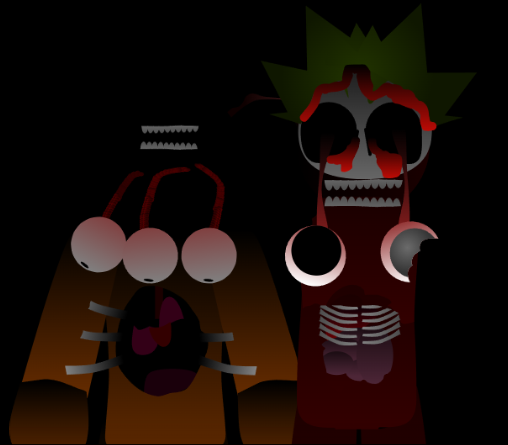Photosynthesis is the fundamental process by which plants, algae and some bacteria convert light energy into chemical energy. It is the basis of most food chains on Earth. Light energy comes from the Sun, and is captured by a green pigment called chlorophyll. Chlorophyll is found in chloroplasts, special organelles within plant cells. Chlorophyll mainly absorbs red and blue light, reflecting the green light, which gives plants their characteristic color. Other pigments, such as carotenoids, also help in the collection of light. Carbon dioxide (CO2) of air is an essential component in photosynthesis. Plants absorb this gas through small pores in their leaves called stomata. Water (H2O) is another vital ingredient, absorbed by the roots of the plant from the ground. This water travels through the conductive vessels to the leaves. Photosynthesis is divided into two main stages: the light phase and the dark phase. Both are crucial for energy conversion. The light phase occurs in the tilacoidal membranes of chloroplasts, where light energy is used to divide water molecules. This process releases oxygen (O2) as a byproduct. The luminous phase also produces ATP (adenosine tryphosphate) and NADPH, two energy carrier molecules that will be used in the next stage. These molecules store the energy of the light. The dark phase, or Calvin cycle, occurs in the stroma of the chloroplast, the fluid space surrounding the tilacoidal membranes. Here is not necessary directly. In the dark phase, carbon dioxide is incorporated into organic molecules, using the energy of the ATP and the NADPH generated in the light phase. This process is known as carbon fixation. The main organic molecule produced in the Calvin cycle is glucose (C6H12O6), a simple sugar that serves as a source of energy and raw material for the plant. Glucose can be used directly by the Plant as a source of energy, or stored in starch for later use. Starch is a form of energy storage. Photosynthesis is essential for life on Earth because it produces oxygen, a vital gas for breathing of most organisms. Without photosynthesis, there would be no free oxygen in the atmosphere. Photosynthesis is also key to the carbon cycle, since it removes carbon dioxide from the atmosphere and makes it organic compounds. This helps to regulate the global climate. Factors such as the intensity of light, temperature and water availability and carbon dioxide influence the photosynthesis rate. Optimal conditions maximize the efficiency of the process. Photosynthesis is a complex process that involves a large number of enzymes and proteins. Each stage is finely regulated to optimize efficiency. C4 plants and CAM are examples of evolutionary adaptations for photosynthesis in arid environments or with high light intensity. These plants have developed mechanisms to minimize water loss. The study of photosynthesis has important implications for the development of biofuels and the improvement of crop productivity. Genetic engineering can help optimize this process. Research in photosynthesis also seeks to understand how we can mitigate climate change by improving the ability of plants to capture carbon dioxide. In summary, photosynthesis is a vital process that supports life in Earth, turning solar energy into chemical energy available for all living beings. It is a really fascinating process!
Comments
Log in with itch.io to leave a comment.
How did y'all send tickets
super giant oren
hi
hi
Somehow the designs and their bodies make me laugh instead of get scared like bro look at sky his mouth looks like it's screaming for help😭🙏
yeah
little head
😭
"I could never snitch!" ahh sky
eagle
eagle
🦅🦅🦅🦅🦅🦅🦅🦅🦅🐦🦅🦅🦅🦅
Photosynthesis is the fundamental process by which plants, algae and some bacteria convert light energy into chemical energy. It is the basis of most food chains on Earth. Light energy comes from the Sun, and is captured by a green pigment called chlorophyll. Chlorophyll is found in chloroplasts, special organelles within plant cells. Chlorophyll mainly absorbs red and blue light, reflecting the green light, which gives plants their characteristic color. Other pigments, such as carotenoids, also help in the collection of light. Carbon dioxide (CO2) of air is an essential component in photosynthesis. Plants absorb this gas through small pores in their leaves called stomata. Water (H2O) is another vital ingredient, absorbed by the roots of the plant from the ground. This water travels through the conductive vessels to the leaves. Photosynthesis is divided into two main stages: the light phase and the dark phase. Both are crucial for energy conversion. The light phase occurs in the tilacoidal membranes of chloroplasts, where light energy is used to divide water molecules. This process releases oxygen (O2) as a byproduct. The luminous phase also produces ATP (adenosine tryphosphate) and NADPH, two energy carrier molecules that will be used in the next stage. These molecules store the energy of the light. The dark phase, or Calvin cycle, occurs in the stroma of the chloroplast, the fluid space surrounding the tilacoidal membranes. Here is not necessary directly. In the dark phase, carbon dioxide is incorporated into organic molecules, using the energy of the ATP and the NADPH generated in the light phase. This process is known as carbon fixation. The main organic molecule produced in the Calvin cycle is glucose (C6H12O6), a simple sugar that serves as a source of energy and raw material for the plant. Glucose can be used directly by the Plant as a source of energy, or stored in starch for later use. Starch is a form of energy storage. Photosynthesis is essential for life on Earth because it produces oxygen, a vital gas for breathing of most organisms. Without photosynthesis, there would be no free oxygen in the atmosphere. Photosynthesis is also key to the carbon cycle, since it removes carbon dioxide from the atmosphere and makes it organic compounds. This helps to regulate the global climate. Factors such as the intensity of light, temperature and water availability and carbon dioxide influence the photosynthesis rate. Optimal conditions maximize the efficiency of the process. Photosynthesis is a complex process that involves a large number of enzymes and proteins. Each stage is finely regulated to optimize efficiency. C4 plants and CAM are examples of evolutionary adaptations for photosynthesis in arid environments or with high light intensity. These plants have developed mechanisms to minimize water loss. The study of photosynthesis has important implications for the development of biofuels and the improvement of crop productivity. Genetic engineering can help optimize this process. Research in photosynthesis also seeks to understand how we can mitigate climate change by improving the ability of plants to capture carbon dioxide. In summary, photosynthesis is a vital process that supports life in Earth, turning solar energy into chemical energy available for all living beings. It is a really fascinating process!